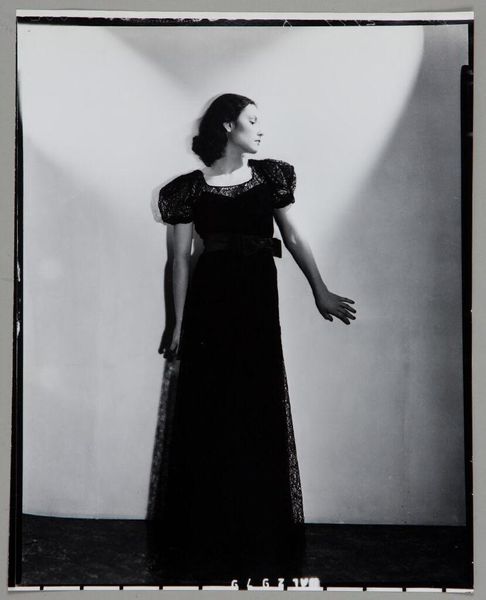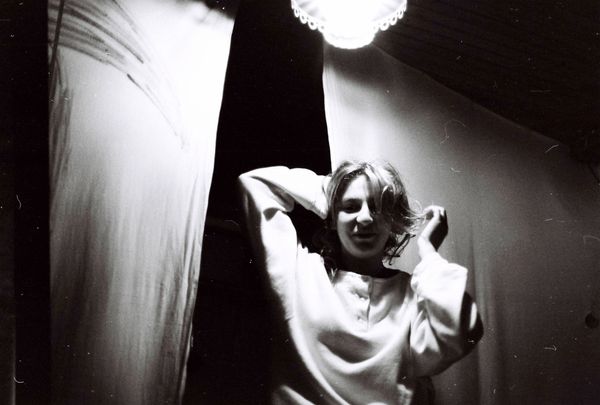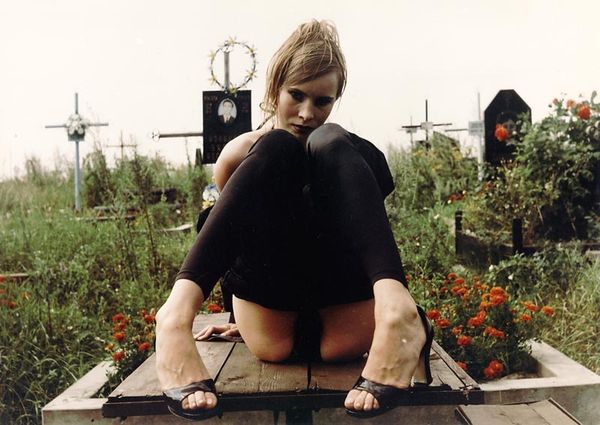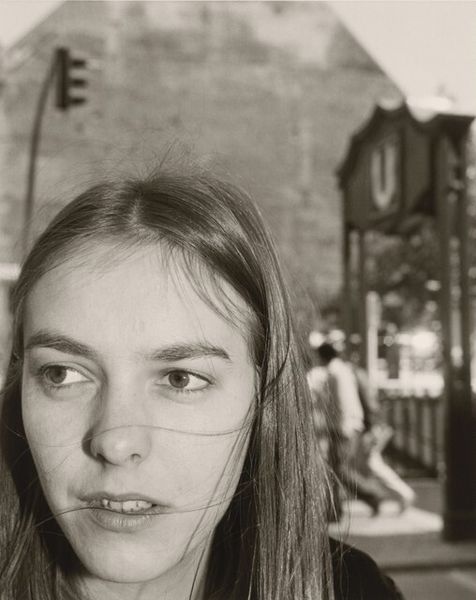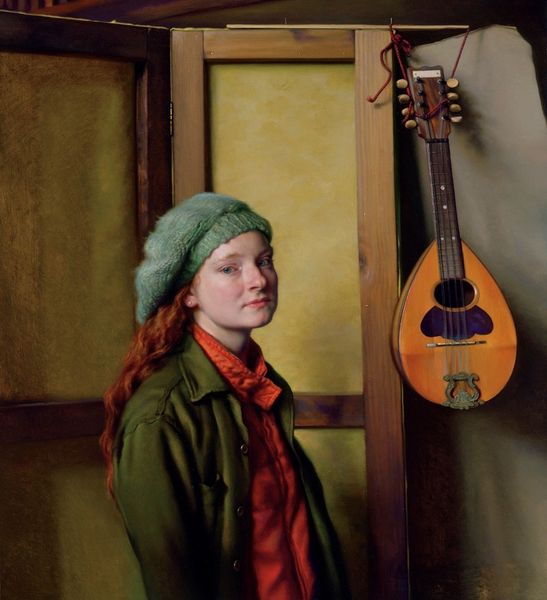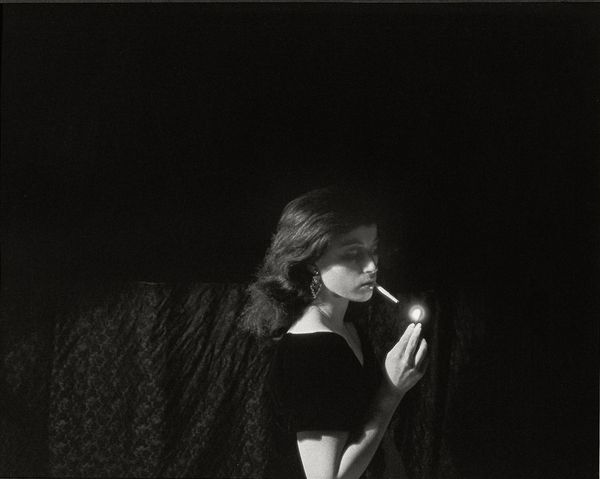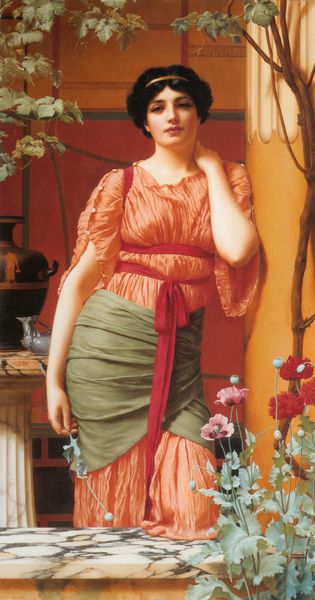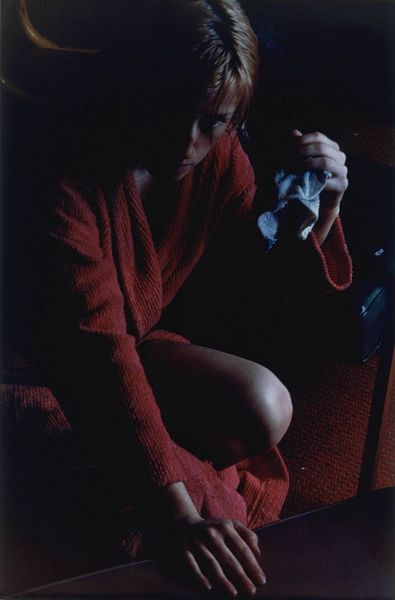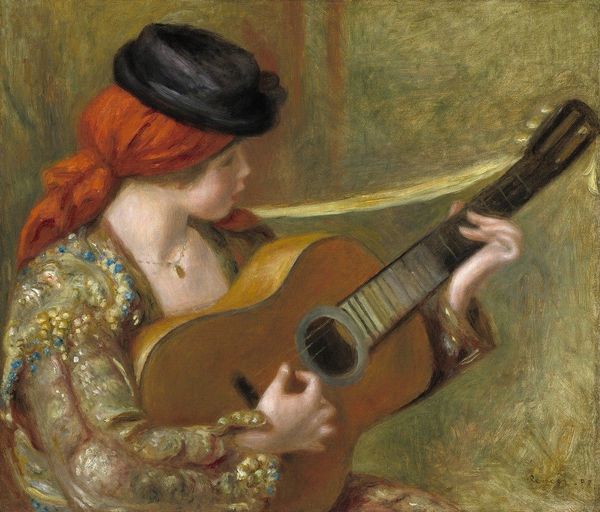
painting, oil-paint
#
portrait
#
portrait
#
painting
#
oil-paint
#
genre-painting
#
academic-art
Copyright: YiFei Chen,Fair Use
Editor: This is "The Girl Who Plays the Mandolin" by YiFei Chen. I am immediately drawn to its intimacy, with the figure's gaze averted and the close framing, despite what I think is its relatively large scale. How do you interpret this painting? Curator: This work makes me think about the role of women in art, particularly in relation to performance and the gaze. Traditionally, women have been depicted as passive objects, instruments of beauty rather than active agents. How does Chen's portrait challenge or perhaps reinforce these historical representations? Does the mandolin empower her or further objectify her within a patriarchal framework? Editor: That's a compelling question. I initially saw the mandolin as a source of empowerment, an expression of her individuality. But now that you mention the historical context, I wonder if I'm simply romanticizing it. Curator: Consider also the composition: the dark background, the still life of tulips. These elements contribute to a complex narrative. The flowers, though beautiful, are cut off from their roots, arranged for display. Does this echo anything about the subject’s positioning within the painting, or broader society? Is there tension here? Editor: Definitely, there's a subtle tension. The tulips suggest beauty and fragility. So, in your view, the painting becomes more than just a portrait; it's a statement about the social constraints and expectations placed on women? Curator: Precisely. And the "academic art" style adds another layer, referencing a tradition of idealized female portraits. It's through this dialogue with history that the painting gains its power, inviting us to question how women are represented, perceived, and ultimately, allowed to express themselves. Editor: That's really fascinating; I appreciate that historical and social framing. It's helped me see the painting in a whole new light. Curator: Absolutely! The point is to continue to explore how art reflects and shapes our understanding of identity and social structures.
Comments
No comments
Be the first to comment and join the conversation on the ultimate creative platform.
